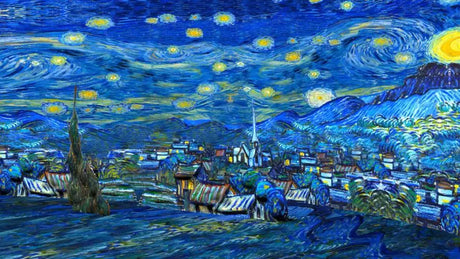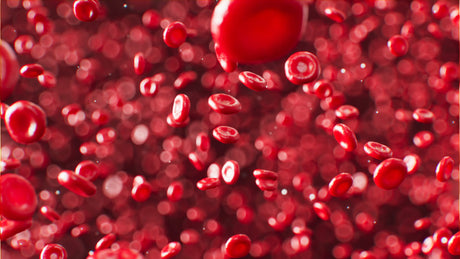Understanding Red Light Therapy
Red light therapy (RLT), also known as low-level light therapy (LLLT) or photobiomodulation, involves exposing the skin to low-wavelength red or near-infrared light (typically between 630nm and 850nm). These wavelengths penetrate deep into the skin layers, where they stimulate energy production in cells—more specifically, in the mitochondria.
It’s not a new-age fad. In fact, red light therapy has been studied for decades and is even cleared by the FDA for certain cosmetic uses, including wrinkle reduction.
The Aging Process and Skin Degeneration
Before we explore how red light works, let’s quickly understand why our skin changes in the first place.
With age, your skin naturally produces less collagen and elastin, two proteins that maintain firmness and elasticity. Environmental stressors like UV radiation, pollution, smoking, and poor nutrition accelerate this process. Over time, the skin loses structure, sags, and develops wrinkles—especially around the eyes, mouth, and forehead.
How Red Light Therapy Works on Skin
Red light therapy doesn’t just “treat” the surface—it goes deeper.
When red light hits your skin, it’s absorbed by the mitochondria in your cells. This boosts adenosine triphosphate (ATP) production—the energy your cells need to repair themselves. The result? Increased fibroblast activity, more collagen, faster healing, and a visible reduction in fine lines and wrinkles.
Boosting Collagen Production Naturally
Collagen is the building block of youthful skin. As production slows with age, wrinkles start to form.
Studies show red light therapy can increase collagen density in the skin by stimulating fibroblasts—the cells responsible for producing collagen and elastin. This effect leads to visibly smoother, plumper skin.
Reducing Inflammation and Oxidative Stress
Red light therapy also reduces inflammation and oxidative stress, both of which accelerate skin aging.
By increasing circulation and decreasing oxidative damage, RLT helps create a better environment for skin rejuvenation. Think of it as cleaning up the cellular mess so your skin can start fresh.
Clinical Studies That Back It Up
Real science supports the hype. Several randomized controlled trials have shown:
-
Reduction in periorbital wrinkles (around the eyes)
-
Improvements in skin smoothness and elasticity
-
Long-term changes in skin structure, not just superficial results
Comparing Red Light Therapy with Other Anti-Aging Treatments
| Treatment | Effectiveness | Cost | Invasiveness |
|---|---|---|---|
| Red Light Therapy | Moderate to High | $$ | Non-invasive |
| Botox | High | $$$$ | Invasive |
| Retinoids | Moderate | $ | Topical Irritation Risk |
| Laser Resurfacing | High | $$$$ | Invasive, Downtime |
| Microneedling | High | $$$ | Minimally Invasive |
Red light therapy stands out for its non-invasive, low-risk profile and cumulative benefits over time.
How to Use Red Light Therapy at Home Safely
You don’t need a fancy spa to get started. Modern at-home devices make RLT accessible and effective—if used correctly.
-
Use 3–5x/week for 10–20 minutes
-
Hold device 6–12 inches from skin
-
Cleanse skin before use
-
Avoid direct eye exposure (wear goggles)
Recommended Wavelengths and Power Levels
-
630nm to 660nm: Best for surface-level issues like fine lines
-
810nm to 850nm: Penetrates deeper to stimulate collagen and reduce inflammation
-
Choose a device with irradiance > 100mW/cm² for noticeable results
When to Expect Results
Most users report visible improvement in 4–8 weeks, with optimal changes after 12–16 weeks of consistent use.
Red Light Therapy Risks and Side Effects
RLT is generally very safe, but like anything, it’s not for everyone.
Possible side effects:
-
Temporary redness or dryness
-
Mild headaches if used near the eyes
-
Overuse can cause fatigue or skin sensitivity
Avoid RLT if you:
-
Are pregnant (consult a doctor)
-
Take photosensitive medications
-
Have a history of skin cancer
Who Should Try Red Light Therapy?
-
Women over 30 noticing early signs of aging
-
Men with sun-damaged skin
-
Anyone looking for a non-invasive anti-aging solution
-
Post-menopausal women seeking collagen support
-
People with sensitive skin who react to retinol or acids
Real People, Real Results
🗨️ "After six weeks, my crow’s feet looked softer, and my skin felt tighter. It’s part of my nightly routine now." — Sophia Bennet
🗨️ "I was skeptical, but my laugh lines faded significantly. Red light therapy truly surprised me." —Liam Walker
Frequently Asked Questions (FAQs)
Q1: Does red light therapy really work for wrinkles?
Yes, multiple peer-reviewed studies show it increases collagen and reduces fine lines when used consistently.
Q2: Is it safe for sensitive skin?
Yes, it's non-ablative and doesn’t cause irritation like retinoids or acids.
Q3: How long does it take to see results?
Typically 4–12 weeks with regular use, depending on skin condition.
Q4: Can I combine it with skincare products?
Yes, but avoid products with acids or retinoids directly before/after use.
Q5: Is red light therapy painful?
Not at all. You’ll just feel gentle warmth. No downtime required.
Q6: Can I use it every day?
It’s safe up to 5 times per week. Daily use may not accelerate results and can overwork your cells.
Conclusion: Is Red Light Therapy Worth It for Wrinkles?
Absolutely. Red light therapy is a safe, evidence-based way to improve your skin without injections, surgery, or harsh chemicals. While it’s not an overnight miracle, its natural stimulation of collagen and cellular repair can offer transformative, lasting results with consistent use.
Still unsure? Try it for a few weeks and see what your mirror says. Just like anything worth having—youthful skin takes commitment.
🔗 External Resource:
Learn more from:
https://pmc.ncbi.nlm.nih.gov/articles/PMC3926176/#s020














